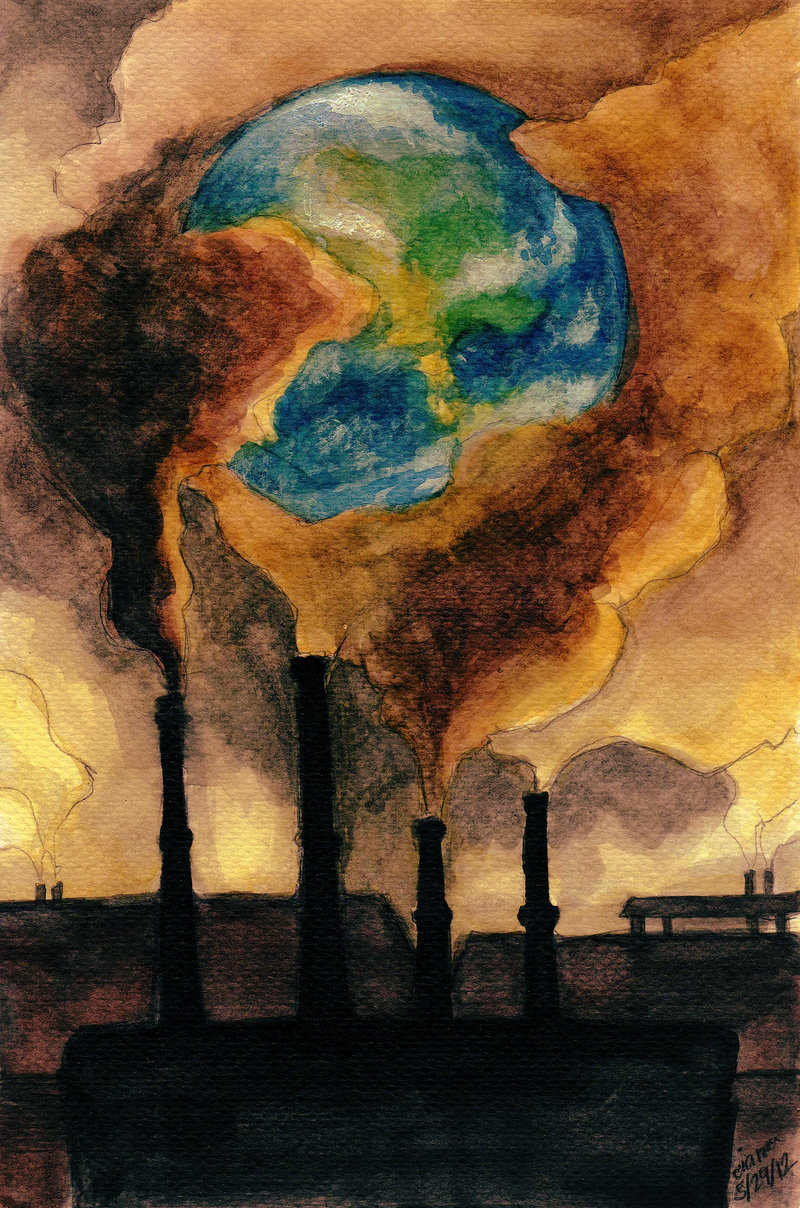 Sunshine and warmth again this Tuesday afternoon on California’s north coast — we’re sitting near 70-degrees here close to 5 o’clock, forecast for the high-70s along the shoreline for tomorrow and Thursday.
Sunshine and warmth again this Tuesday afternoon on California’s north coast — we’re sitting near 70-degrees here close to 5 o’clock, forecast for the high-70s along the shoreline for tomorrow and Thursday.
Sweet here, but way-hot-shitty just slightly eastward from the beach — an example of our future.
Research from the University of Colorado, published yesterday:
Even if humans could instantly turn off all emissions of greenhouse gases, Earth would continue to heat up about two more degrees Fahrenheit by the turn of the century, according to a sophisticated new analysis published today in the journal Nature Climate Change.
If current emission rates continue for 15 years, the research shows, odds are good that the planet will see nearly three degrees Fahrenheit (1.5 Celsius) of warming by then.
So far this year, second-hottest first six-months on record, behind only 2016.
(Illustration found here).
Indicator of the ‘real‘ tomorrows to come — climate change is the greatest threat by-far for ‘all‘ of humanity, yet due to the insane, nefarious antics of the T-Rump distracts way-more-than-bigly from that coming horror.
Further from the link above:
“This ‘committed warming’ is critical to understand because it can tell us and policymakers how long we have, at current emission rates, before the planet will warm to certain thresholds,” said Robert Pincus, a scientist with the Cooperative Institute for Research in Environmental Sciences (CIRES), a partnership of the University of Colorado Boulder and NOAA.
“The window of opportunity on a 1.5-degree [C] target is closing.”
Main-important words, ‘window of opportunity.’
Another piece on the study — via Scientific American this morning:
There’s only a 5-percent chance of limiting warming to less than 2 degrees Celsius, according to a forecast drawn from a statistical analysis of 150 countries’ population and economic growth.
In recent years, it has become increasingly common to frame the climate change problem as a kind of countdown — each year we emit more carbon dioxide, narrowing the window for fixing the problem, but not quite closing it yet.
After all, something could still change.
Emissions could still start to plunge precipitously.
Maybe next year.
And again, main words, ‘maybe.’
Details on the scope to the calamity from the the Washington Post, also this morning:
This outlook has allowed, at least for some, for the preservation of a form of climate optimism in which big changes, someday soon, will still make the difference.
Christiana Figureres, the former head of the United Nations’ Framework Convention on Climate Change, recently joined with a group of climate scientists and policy wonks to state there are three years left to get emissions moving sharply downward.
If, that is, we’re holding out hope of limiting the warming of the globe to below 2 degrees Celsius (3.6 degrees Fahrenheit) above pre-industrial temperatures, often cited as the threshold where “dangerous” warming begins (although in truth, that’s a matter of interpretation).
Yet a battery of recent studies call into question even that limited optimism.
Last week, a group of climate researchers published research suggesting the climate has been warming for longer than we thought due to human influences — in essence, pushing the so-called “preindustrial” baseline for the planet’s warming backwards in time.
The logic is clear: If the Earth has already warmed more than we thought due to human activities, then there’s even less remaining carbon dioxide that we can emit and still avoid 2 degrees of warming.
…
Two new studies published Monday, meanwhile, go further towards advancing this pessimistic view which asserts that there’s little chance of the world will stay within prescribed climate limits.
The first new study calculates the statistical likelihood of various amounts of warming by the year 2100 based on three trends that matter most for how much carbon we put in the air.
Those are the global population, countries’ GDP (on a per capita basis), and carbon intensity, or the volume of emissions for a given level of economic activity.
The research finds that the median warming is likely to be 3.2 degrees Celsius, and further concludes that there’s only a 5 percent chance that the world can hold limiting below 2 degrees Celsius and a mere 1 percent chance that it can be limited below 1.5 degrees Celsius (2.7 degrees Fahrenheit).
That will come as bad news for vulnerable small island nations in particular, which have held out for a 1.5 degree target, along with other particularly vulnerable nations.
…
The second new study, meanwhile, takes a different approach, analyzing how much global warming the world has already committed to, since the warming due to some emissions has not yet arrived.
Nonetheless, with the planet at a so-called energy imbalance, that warming is inevitably coming, and the study — conducted by Thorsten Mauritsen of the Max Planck Institute for Meteorology in Germany and Robert Pincus of the University of Colorado, Boulder — finds that it probably pushes us several slivers of a degree beyond where we are now.
And the ‘window‘ slivers close…